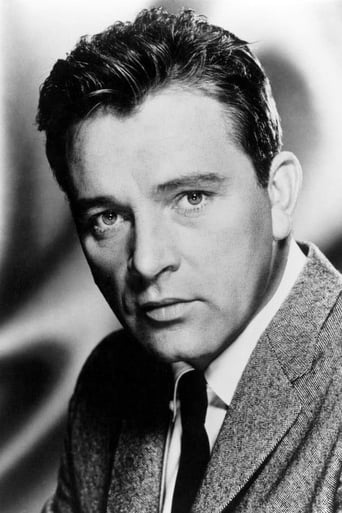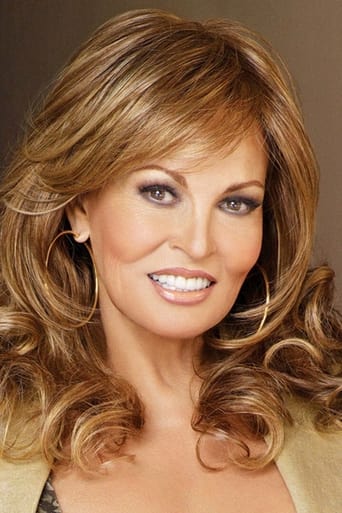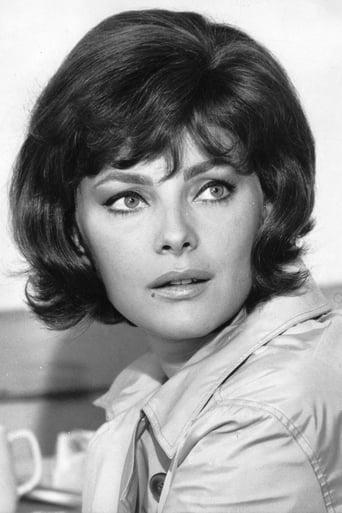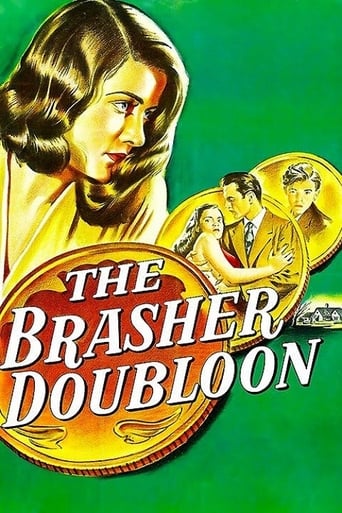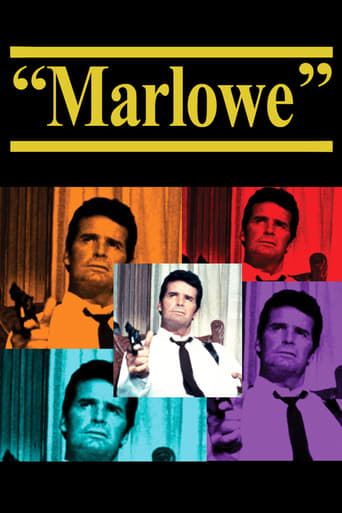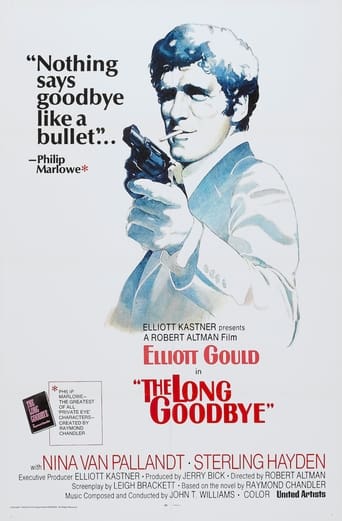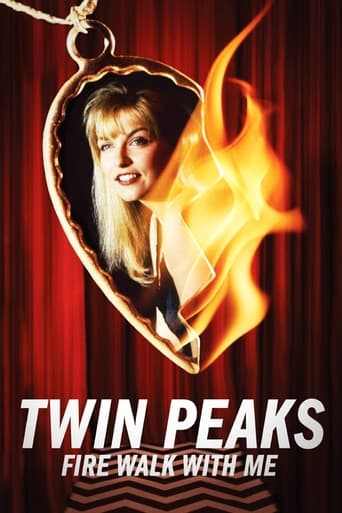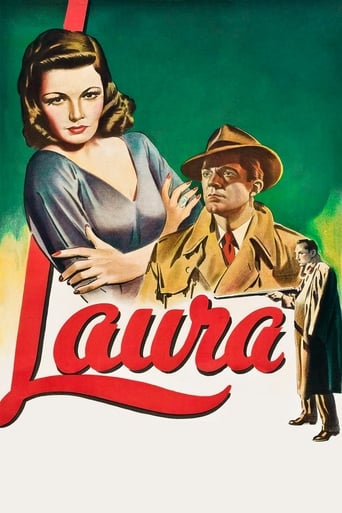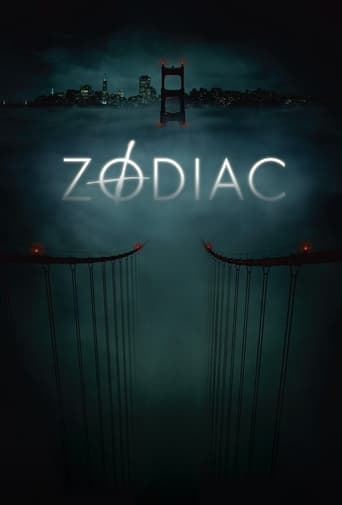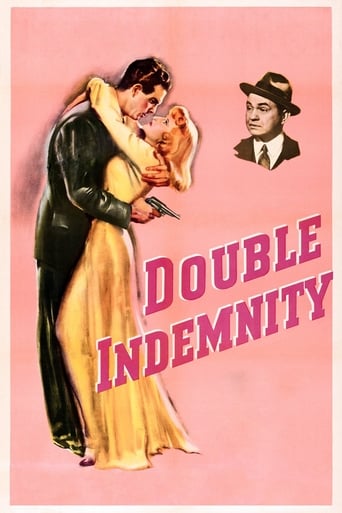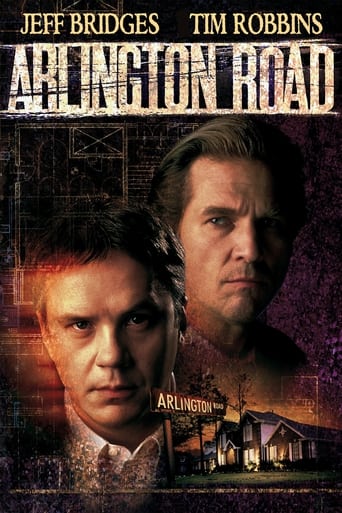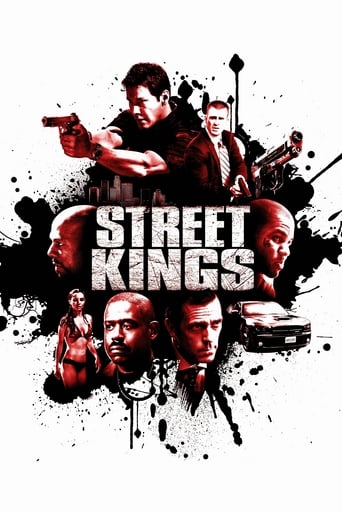

Bluebeard (1972)
Baron von Sepper is an Austrian aristocrat noted for his blue-toned beard, and his appetite for beautiful wives. His latest spouse, an American beauty named Anne, discovers a vault in his castle that's filled with the frozen bodies of several beautiful women.
Watch Trailer
Cast


Similar titles
Reviews
Just perfect...
Fun premise, good actors, bad writing. This film seemed to have potential at the beginning but it quickly devolves into a trite action film. Ultimately it's very boring.
There is, somehow, an interesting story here, as well as some good acting. There are also some good scenes
Through painfully honest and emotional moments, the movie becomes irresistibly relatable
Tis is a soporific remake titled ¨Bluebeard¨(1972) by Edward Dmytryck with the great star Richard Burton as a German Baron noted for his blue-toned beard . Big-budgeted as well as mediocre picture upon a known personage who knocks off series of beautiful women . A World War I pilot Kurt Von Sepper (Richard Burton) whom everybody envies as a "ladykiller" actually is one - after he beds the women he's after, he murders them . As he contacts European women , he seduces and eventually kills them in order to carry out his dark purports . His latest wife is an American beauty named Anne (Joey Heatherton) ; later on , Bluebeard explains to Anne that he found an easier alternative to divorce when he grew bored with his former spouses . Among those getting the ending curtain call from "bluebeard" (is a type of serial killer ; specifically, it is a man who murders his wives or lovers , this type is named after the fictional "Bluebeard") are Rachel Welch , Natahalie Delon , Virna Lisi , Karin Schubert and Agostina Belli .This murder/drama is based on lady killer Henry-Denise Landru who seduced and murdered several women . The flick narrated by means of flashbacks , being realized in luxurious style ; it packs irony , drama , nudism , chills , suspense , kitsch situations and a lot of killings . Average acting by Richard Burton as an aristocrat who has a psychopatic urge to strangle gorgeous women . Exceptional group of European and American actresses , topbilled second after Richard Burton, Raquel Welch only has a little more than 8 minute screening time of this two hour long film . The speaking voices of almost all the European actresses in the film were re-voiced by Annie Ross . Enjoyable musical score by the great Ennio Morricone , including a sensitive and thrilling leitmotiv . Colorful as well as evocative Cinematography by Gabor Pogany . The motion picture was regularly directed by Edward Dmytryck and considered to be one of his worst movies . Filmmaker Edward , better known for overtly personal movies such as The Caine Mutiny was a craftsman whose career resulted to be interrupted by the activities of the House Un-American Activities Committee (HUAC), a congressional committee that employed ruthless tactics aimed at rooting out and destroying what it saw as Communist influence in Hollywood . Dmytryk was one of the so-called "Hollywood Ten" who refused to cooperate with HUAC and had their careers disrupted or ruined as a result. The committee threw him in prison for refusing to cooperate, and after having spent several months behind bars , Dmytryk decided to cooperate . Dmytrick's biggest film was ¨The Caine Mutiny¨ , . Edward was an expert on warlike genre as ¨Back to Batan¨ , ¨Battle of Anzio¨ , ¨Young lions¨ and Western as ¨Broken lance¨ , ¨Alvarez Kelly¨ , ¨Warlock¨ among others.Other films dealing with this known character , Henry ¨Bluebeard¨ Landru , -who was really father of various children, disposed and married 11 wives and killed them in order to feed his little family , being subsequently beheaded- , are the followings : ¨Bluebeard¨ (1901) by George Melies ; ¨Bluebeard¨ (1944) by Edgar G Ulmer with John Carradine , Jean Parker , Nils Asther ; ¨Monsieur Verdoux¨ (1947) with Charles Chaplin and Martha Ryer ; ¨Bluebeard's 10 honeymoon¨ by W.L. Wilder with George Sanders , Patricia Roc and Corinne Calvet ; ¨Bluebeard¨(1963) by Claude Chabrol with Charles Denner , Stephane Audran , Danielle Darrieux , Michele Morgan and Hildegarde Neff ; and ¨¨Bluebeard¨(2009) by Catherine Breillat with Dominique Thomas and Lola Creton .
Spoilers Yes, Joey Heatherton, who is best known for the sexy perfect sleeper advertisements, delivers some powerful lines near the ending of this one. You would need to sit through the rest of a lack luster movie to get to it, but finally, at the end she slams out some great stuff. She put it out of the park, a real home run. She stands toe to toe with her male lead (Richard Burton) and steals the scene and the movie, saying: Being impudent is a pitiful problem but YOU! YOU COVER UP YOUR PROBLEMS! YOU KILLED THESE WOMEN TO HIDE YOUR PROBLEM! YOU'RE A COWARD! YOU ONLY KNOW HOW TO MAKE WAR! NOT LOVE! YOU'RE ONLY HALF-A-MAN! (Burton) I'm a man! Heatherton (Angrily and quickly throwing off all her clothes.) Prove it!
It's funny, but I always thought the Bluebeard character was based on a real-life historical figure, much as Vlad the Impaler had been the inspiration for Dracula, and Gilles de Rais inspired Paul Naschy's Alaric de Marnac, and the Countess Elizabeth Bathory was the obvious basis for Delphine Seyrig's vampiric Countess Bathory in "Daughters of Darkness." But a little research reveals that Bluebeard was rather the creation of French author Charles Perrault, and first appeared in a collection of the author's fairy tales in 1697. The basis for no less than six cinematic treatments, the character appeared in 1972's "Bluebeard" in a top-notch production with a terrific cast; a film that was, strangely enough, almost universally scorned by the critics of the time. It has taken me a full 40 years to finally catch up with this one, and now I cannot help wondering what all the negative comments were about. The film strikes me as a woefully underrated, black comedy/horror gem, and a tremendously entertaining one, to boot. In the film, Richard Burton plays the title character, also known as the Baron Kurt von Sepper. The survivor of a WW1 dogfight crash landing, von Sepper's face is now somewhat scarred and covered with a neatly trimmed beard that, due to some chemical admixture in that crash, is now decidedly bluish in tint. A wealthy landowner, the Baron lives in a sprawling castle in what the viewer must infer is Nazi Germany; a lover of beauty, he has already gone through six wives by the time the film begins in earnest. Unfortunately, all six of his previous wives were, for one reason or another, "monsters" in the Baron's eyes, and he was compelled to slay the entire bunch, keep them preserved in his hidden refrigerator room, and then paint abstract portraits of them (a la Humphrey Bogart in 1947's "The Two Mrs. Carrolls") for his gallery. And now wife #7, an American entertainer named Anne (surprisingly well played by '60s sexpot Joey Heatherton), has just moved in....Unlike Henry VIII, who only killed two out of his six wives (Anne Boleyn and Catherine Howard), von Sepper here is a much more consistent chap! Burton is quite excellent in his portrayal, and I really cannot explain all the harsh criticism regarding his performance. The film boasts some incredibly handsome sets, solid direction from Hollywood vet Edward Dmytryk (this was his extra-penultimate film), and yet another wonderful score from the maestro, Ennio Morricone; a creepy/lovely score that will likely stay with you for days. (As I've said elsewhere, I'm just in awe at how many superb film scores this genius has come up with!) Joey, very much the female lead here, not only looks smashing, but also does quite well in the acting department, too (although she does not FULLY convince us that she's a 1920s flapper, with her decidedly limited acting range); she also gets to do some high-kicking dance numbers here, of the sort that wowed viewers of "The Dean Martin Show" in the mid-'60s. "Bluebeard"'s structure is a fairly interesting one, jumping about in time as it does. During the film's numerous flashbacks, we get to see von Sepper's six previous wives, and learn just how and why he did away with them. And what a bevy of international pulchritude is on display for the viewer here! We meet wife #1, a singer who just wouldn't stop singing, and played by the gorgeous Italian actress Virna Lisi; wife #2, Erika, a baby-talking nitwit played by the luscious French actress Nathalie Delon, who goes to a prostitute (played by Austrian cult actress Sybil Danning) for lovemaking advice; wife #3, a lapsed nun with a rather licentious past, played by THE American sex goddess of the era, Raquel Welch (though second billed, Racky only gets seven minutes of screen time in the film); wife #4, Brigitt, a feminist turned masochist, and played by steamy Italian beauty Marilu Tolo; wife #5, Caroline, a very young and indolent layabout, portrayed by supersexy Italian actress Agostina Belli; and wife #6, the increasingly randy Greta, played by German (future porno) actress Karin Schubert. All these fabulous babes give wonderful comedic performances, helping to make "Bluebeard" a black comedy to relish. But the horror elements are present in abundance, too; besides the six grisly murders, the film dishes out a mute female servant, underground crypts, a mother's preserved corpse (one that is just as hideous as "Psycho"'s Mrs. Bates), a cobwebbed castle, an electric chair and on and on. Perhaps most horrifying, for this viewer, however, was the spectacle of all manner of wildlife--rabbits, deer, fowl, a fox, a boar--being shot and killed during one of the Baron's hunting parties. No animal should be needlessly slaughtered to make a motion picture, I feel, so I am deducting some points for this gratuitous nastiness. But other than this scene, the film works splendidly, and is really grade-A entertainment. This is a story that can be recast and remade every generation, it seems to me, using the top female sex symbols of the day. I can almost envision a 2013 version, starring Salma Hayek, Michelle Pfeiffer, Megan Fox, Scarlett Johansson....
In the past, I’d watched three other versions (four, if one includes Charles Chaplin’s variation MONSIEUR VERDOUX [1947]) about the famous fictional serial killer Landru – the 1944 Edgar G. Ulmer/John Carradine and 1963 Claude Chabrol/Charles Denner BLUEBEARD and the W. Lee Wilder/George Sanders BLUEBEARD’S TEN HONEYMOONS from 1960.Actually, this one is best approached as “Euro-Cult” (what with its flashes of nudity from a bevy of international beauties) rather than a historical piece – BLUEBEARD, incidentally, was a production of the Salkinds, soon to enjoy critical success with Richard Lester’s “Three Musketeers” films and, eventually, the money would come pouring in with the “Superman” franchise. Besides, the tone is unsurprisingly one of black comedy – with the titular ladies’ man revealed as an impotent who’s forced to kill a succession of spouses so as to keep this embarrassing fact a secret! Incidentally, it also transpires that events as depicted on-screen may well be fabricated since the real reason for the killings only emerges towards the end: “Bluebeard” – a WWI air ace – recounts his romantic misadventures to his latest conquest, a young American showgirl, after she’s cajoled by her husband towards the discovery of a secret passage leading to the vault wherein all the bodies of his former wives lie frozen! The treatment is somewhat heavy-handed (with obvious predatory symbols, for instance): its connotations to Nazism, too, prove unnecessary – and, consequently, Bluebeard’s demise/come-uppance seems fateful when it should have been slyly ironic. All of which results in an uneven film with a tendency towards camp – though undeniably abetted by the overall handsome look (“Euro-Cult” regular Gabor Pogany is the cinematographer) and a typically imposing score by Ennio Morricone; incidentally, I had used portions of a funereal motif from the soundtrack of this film for my final short during the NYFA course I took in Hollywood a couple of years back! Individual contributions by the star cast, then, are also variable: to begin with, Richard Burton’s thespian skills were often misused during this particular period – lending his services to interesting but often ill-advised ventures (three more of which I watched only recently, namely DOCTOR FAUSTUS [1967], CANDY [1968] and THE ASSASSINATION OF TROTSKY [1972]); in this case, he sports a silly colored beard (the script having interpreted the title all-too-literally, but which might actually be an indication that it shouldn’t be taken seriously) and looks alternately bored and exasperated throughout! The ladies are all easy on the eyes but also surprisingly willing, with Joey Heatherton as the stunning current bride getting the lion’s share of the running-time. The others – in order of appearance – are Karin Schubert (when Burton’s deficiency, excused at first by a period of convalescence ostensibly suffering from a war wound, can no longer be concealed, she threatens to expose him to public ridicule and this triggers off his homicidal ‘urge’!); Virna Lisi (enjoying herself as she drives Burton to distraction with her incessant singing of corny love songs!); Nathalie Delon (a model whose inexperience in love leads her to take lessons from prostitute Sybil Danning, but the two become instant lovers!); Raquel Welch (a nymphomaniac who attempts to stifle the habit by, ahem, donning it i.e. she becomes a nun!); Marilu' Tolo (again, fun as an outspoken feminist – who even kicks Burton where it hurts! – but who also turns out to be a closet masochist); and Agostina Belli (as an outwardly-innocent but actually spoilt child-bride).Going back to that “Euro Cult” comment, BLUEBEARD may have been influenced by the giallo work of Mario Bava – with its set of glamorous female victims (as in BLOOD AND BLACK LACE [1964]) and the novel methods of assassination (in the wake of A BAY OF BLOOD [1971]). Still, amid its forced Hitchcock references (the embalmed mother from PSYCHO [1960] and the falcon attack a' la THE BIRDS [1963]), it appears that Burton & Co. were consciously emulating the previous year’s success THE ABOMINABLE DR. PHIBES (1971) – a low-budgeted but stylish vehicle for horror icon Vincent Price. Of course, one can’t forget to mention the film’s affinity with the classic Ealing black comedy KIND HEARTS AND CORONETS (1949) in its nonchalant, inevitably comical attitude to murder.


